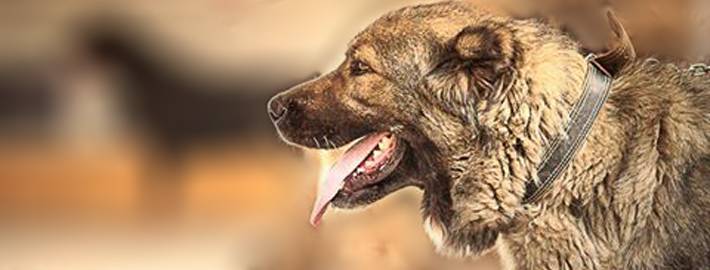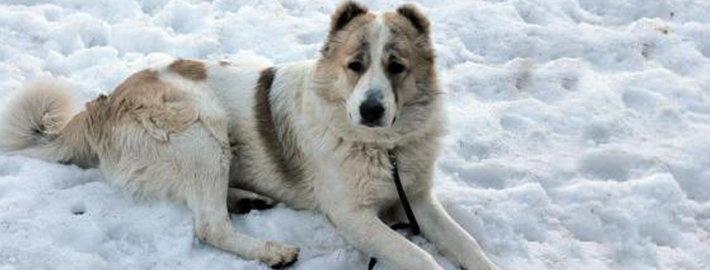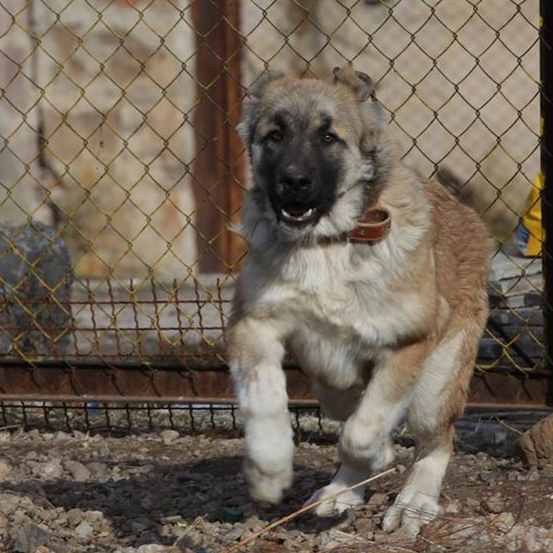What makes the Armenian Gampr Unique?
The loyal Armenian Gampr is a contrast of gentleness and caution, combined with great courage and physical power. The Gampr is noted for its independent mind and calm, keen intellect. This breed bonds with its family and those it is charged with guarding; the Gampr will protect them with its life, but only after it first calmly assesses the need for aggression.
Breed Groups
Page Contents
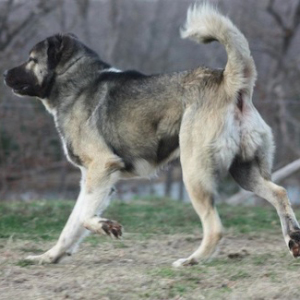
Is the Armenian Gampr Right For You?
Armenian Gamprs have a strong desire to belong to a family, but, unlike more domesticated breeds, they do not devote themselves to their owners unquestioningly. They are reserved in showing affection and need emotional input and attachment from their families in order to bond with them. The relationship with the Gampr is more akin to a friendship of equals, which, if not maintained, will fade away. The owner sets the tone for the relationship—how he or she treats the Gampr will determine how the dog responds. Gamprs need to feel they are important to their family. They tend to bond first with women and children and to recognize the leader in the family.
In 5 Words
- Tranquil
- Intelligent
- Excellent
- Friendly
- Protective
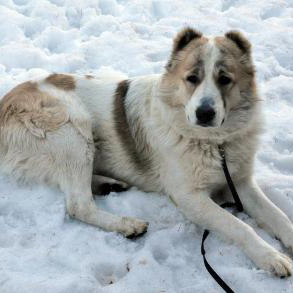
Characteristics
Learn About the Armenian Gampr
Description
General Description
The Armenian Gampr is a very large dog with heavy bone structure, a double coat, muscular physique and very strong pulling power. The head is longer in the cranium than the muzzle. The body should be slightly longer than the shoulder height. The coat can be short, medium or long, and of any color, but is always longest over the shoulders and chest, and in the feathering on the flanks. Because the Gampr is a landrace breed, not a standardized breed, there is considerable difference in types, appearances and personalities. Often the ears are cropped shortly after birth, and occasionally the tail is also cropped.
Short History of the Armenian Gampr
The Armenian Gampr originated in the historical homeland of Armenia, Western Armenia (now called Anatolia) and the southern Caucasus. Legends embedded in the pre-Christian culture of the Armenian people indicate that the dog became domesticated with the advent of agriculture, when the Neolithic moon- and wolf-deity worshipping cultures gave way to sun- and dog-deity worshipping cultures of Paleolithic times. It was said that the sun god Ar sent his helper, the winged dog deity Aralez, to carry fire in his mouth for the use of humankind. Aralez was also credited with healing wounded soldiers and bringing the fallen back to life with his healing tongue. As Armenians traveled throughout the Caucasus, Persia, Central Asia and Europe, they brought their guardian dogs with them, and spread the breed far and wide. It was said that Tigran the Great was particularly fond of the Gampr, and kept hem near him at all times. Tigran the Great was King of Kings in the last century BC, and united a vast kingdom by treaty, from the Mediterranean Sea to Pakistan. Where humans went, so went the Gampr. During the Soviet rule, many larger and hairier Gamprs were taken and sold into the Red Star breeding program, which produced the Caucasian Ovcharka by infusing the original genetics of the Gampr with some other breeds. After the dissolution of the USSR, Armenia rallied around the remaining gene pool, and began the process of giving an official name to the breed that had been within their culture for millennia. Tigran Nazaryan started the database on gampr.net, which inspired the creation of the Armenian Gampr Club of America. Since then, through the efforts of Violeta Gabrielyan, the IKU has also recognized the original breed of the Caucasus, Trans-caucasus and Armenian Highland
Temperament
The Gampr temperament is unique. It is a farm and family guardian, and its guard drive cannot be eliminated, merely educated and refined. It is strong-willed and relatively independent, but wants to become part of their owner’s life to the point of acquiescing and desiring to do the right thing. Always gentle with children. In any family of Gamprs, there will be some with a high human-guard drive and some that guard only against four-legged predators. There will be some that are oriented toward close human companionship, and some that are more aloof. Work with a reputable breeder who can help you with the appropriate temperament for your situation. Often, a Gampr that is relocated, as puppies are when they first arrive, will be shy and refrain from eating, until it is sure it is where it should be. A typical Gampr will guard its own home or farm, but will be more congenial off its own property. Adult dogs should greet newcomers off-territory, and body language should be assessed and monitored for successful engagements. A stiff posture with the tail held high is a sign of intended dominance and possible confrontation, while a relaxed posture, lowered head/tilted to the side, lowered tail, is a sign of friendliness. Because of its strong independent nature, it thinks twice upon receiving commands.
Caring for Your Armenian Gampr
General Health
Gamprs do not have a lot of health problems relating to them. Their strapping selves can become immune to certain types of colds if they already have had one in the past. They lie up to twelve to even sixteen years depending on their genetic health as well as how good their master can prepare for them. Gamprs may get bone issues later in life and resorting to some arthritis medication would do them very well and stop any prolonged pain.
Grooming & Bathing
Their thick and long coat is coarse to the touch and needs a good groom every week. They shed the most during the summer months so this is a precaution that comes with the Gampr. Bathing them can be tough, so washing them outside gently with a hose is one of the best bets when it comes to this gentle giant.
Exercise & Training
When not working as a livestock guard, it should be taken for a daily, long walk where the dog is made to heel. It should never be allowed to walk out in front of the person holding the lead, as in a dog’s mind the leader leads the way, and that leader needs to be the human. Young dogs should not be using stairways, as this can lead to hip problems, and they should get plenty of good exercise on rough terrain. It is necessary to include rough play with other older canines, as this will teach a young dog to moderate its considerable strength, to read another dog’s body language, and to behave in a socially acceptable manner.

